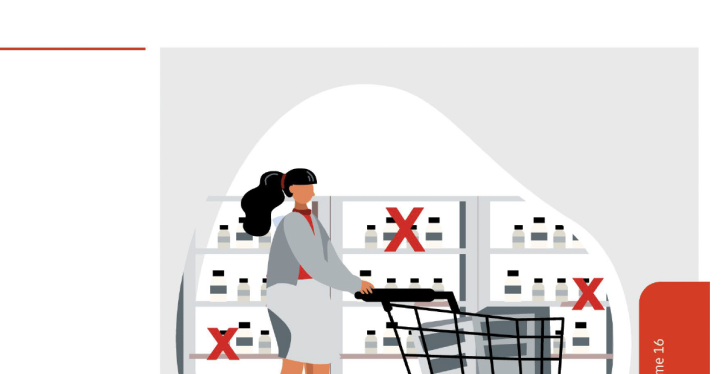Company News • 22.08.2012
New duty-free limits send Canadians on overnight shopping trips
Canadians are shopping for back-to-school bargains — in the U.S.

Higher duty-free limits are sending them south of the border in record numbers, according to data released Tuesday by Statistics Canada. Overnight travel to the U.S. rose 7.5 per cent to 1.9-million trips in June, the highest level since 1972. The majority of overnight travel was by car.
Demand for hotel rooms in the Buffalo-Niagara area rose more than 10 per cent in June over last year, said Dottie Gallagher Cohen, president and CEO of Visit Buffalo Niagara. In July demand for hotel rooms reached a record 239,000 rooms. An emerging trend seems to be that Canadians are crossing the border to take care of all their back-to-school shopping. “Our children’s retailers are seeing it, stores like Gap and children’s shoes stores, and they’re buying everything — footwear, clothing, accessories, groceries,” said Betsey Bonvissuto, director of marketing for the Boulevard Mall in Amherst, N.Y., a 15-minute drive across the border from Niagara Falls.
On June 1, the duty-free exemptions for Canadians returning from trips abroad increased to $200 from $50 for a 24-hour stay. For 48 hours away or more, the limit was increased to $800 per person, up from $200. The changes come at a time when the loonie is above par with the U.S. dollar, making that Canadian money go further south of the border. The loonie fell 0.13 of a cent to close trading Tuesday at $1.0104 (U.S.). For Canadian retailers, events are unfolding as they had feared. When the new limits were announced in the federal budget, retailers said the change would drive Canadian shoppers into the U.S.
The fact that it seems to be driven at least in part by back-to-school shopping is an even greater concern. “Back-to-school is a focus for many retailers,” said David Wilkes, senior vice-president of the Retail Council of Canada. Not all shoppers agree the trip is worth it. Kathy Sallis, 51, travelled from Oshawa to cross at the Lewiston-Queenston Bridge on Saturday with her son, 17, and his girlfriend. They were two hours in line at the border each way, and because they were out of the country less than 24 hours, they had to pay GST and PST on their $334.21 worth of back-to-school clothes. “I have no desire to go back for a long, long, time,” said Sallis. “You pretty much break even after the gas and food.” She did it as an adventure for the kids. She found the prices weren’t much lower. “The gap is narrowing, that’s for sure. It’s cheaper, but not a lot cheaper.”
The cross-border shopping spree seems to offer more evidence that Canadian consumers are done paying higher prices for the same products available for less in the same stores in the U.S. The indignation began with books, after the loonie reached parity with the U.S. dollar. Even today, Canadian consumers can see if they are being charged more for the same books sold in the U.S. – the two prices are typically stamped on the inside cover. With the growing number of American retail chains opening up in Canada, consumer malaise has grown to include brands of all kinds that sell merchandise in Canada and the U.S. at different prices. Canadian retailers blame the problem on outdated tariffs on Canadian goods, originally levied to protect Canadian manufacturers that no longer exist. Suppliers also sell goods to Canadian retailers at higher prices, forcing them to charge consumers more, retailers say.
The Fashion Outlets of Niagara Falls have been exceptionally busy lately, with parents shopping for back-to-school items, said general manager Mary Whelan. Business is so good the mall has rented a parking lot for employees and shuttles them to work so patrons can more easily find parking. Whelan anticipates being busy until at least Sept. 20, because back-to-school shopping is typically followed by more back-to-school shopping, after kids get to school and see what everyone else has. Nearly 70 per cent of shoppers at the outlet stores are based in Canada, she said.
Sarah Graf, marketing director for Walden Galleria, says some stores are seeing higher numbers of Canadian shoppers than others, including Michael Kors, Free People, Pottery Barn, Urban Outfitters and Sephora. The long lineups at the border aren’t unusual on a summer weekend, said Matthew Davison, director of communications and government relations, Buffalo and Fort Erie Public Bridge Authority. “Our weekends are pretty busy, especially this time of year. There’s just so many vacations this time of year and I’m certain back-to-school played a part in it too.”
Statistics on bridge crossings reveal mostly increases in bus and car crossings from Canada to the U.S. in June and July over the same period in 2011.
According to a recent report prepared for Visit Buffalo Niagara, about 3.1-million Ontarians shop in the area annually. In 2011, they spent an estimated $933-million, most of it on retail. The typical Ontario shopper makes one overnight trip to Buffalo-Niagara each year, and comes from metro Toronto and points west. Relatively few shopping trips originate in the areas east of Toronto, according to the report.
channels: customer satisfaction, shop opening hours







